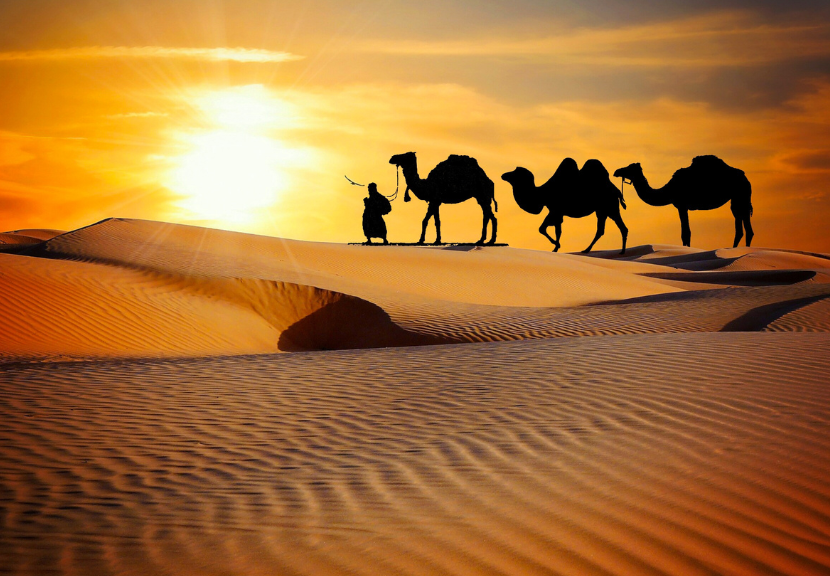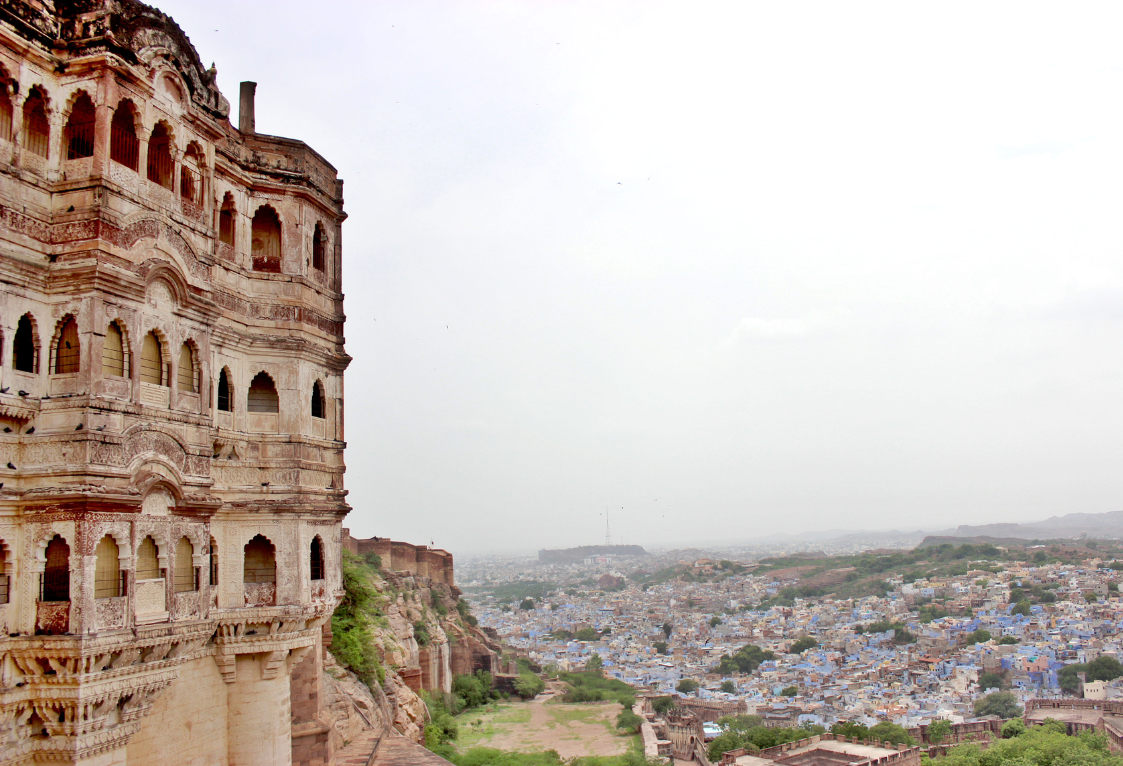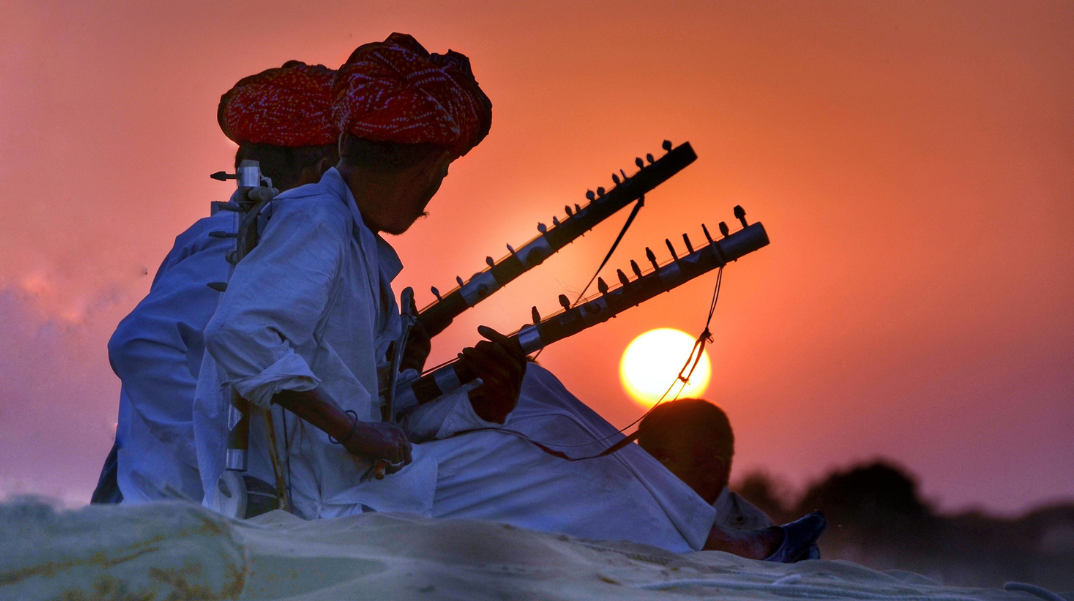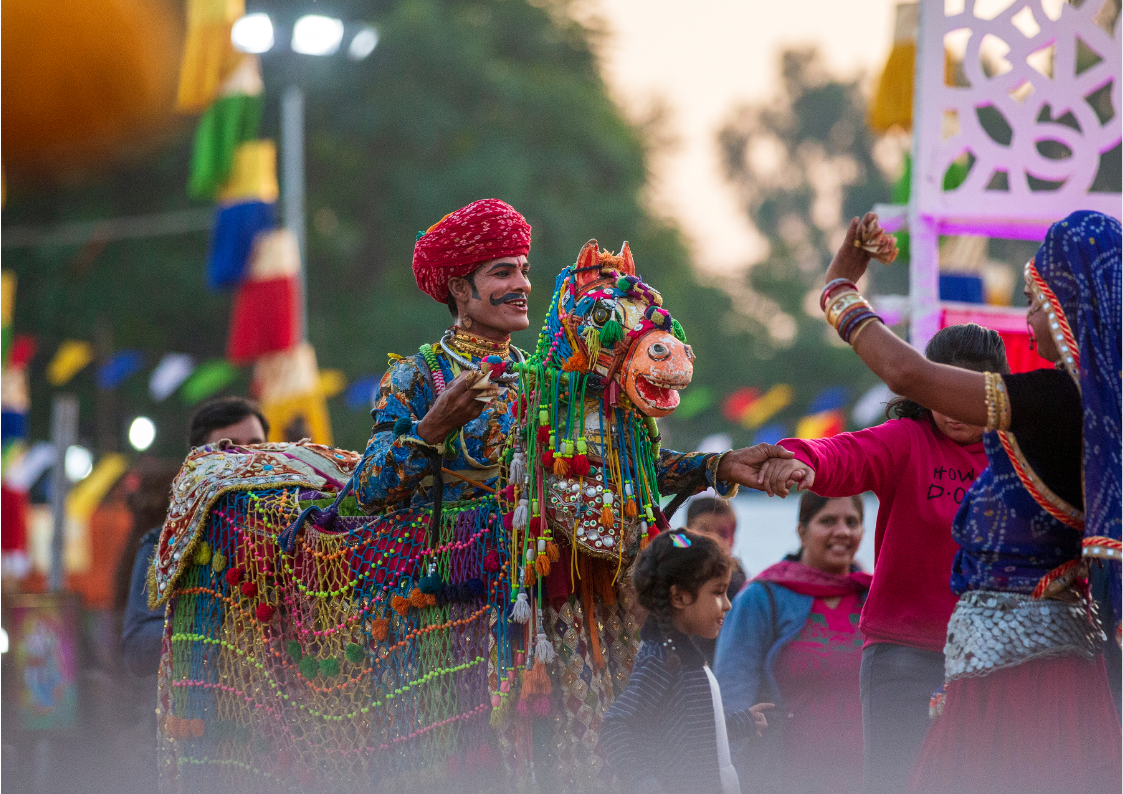The state of Rajasthan, also known as the "Land of Kings," is more than simply a state; it is a timeless tapestry woven with vivid colors, magnificent art, and an ages-old culture. Although it's not exactly a city, as is often believed, this large region has a variety of cities, each of which tells a different story. Let's explore Rajasthan's interior to find its artistic and cultural gems.
History Of Rajasthan
The state of Rajasthan, sometimes known as the "Land of Kings," has a long history that goes back to ancient civilizations. The region has seen the rise and fall of countless empires, each of which has permanently altered the landscape of its culture and architecture. The Indus Valley culture, which emerged approximately 2500 BCE, was followed by the Vedic culture as the first people to settle the area. Over time, Rajasthan was home to the Rajputs, a warrior tribe renowned for their bravery, gallantry, and deep sense of honor. The Rajputs developed several dynasties after the 7th century, fending off Muslim, Mughal, and later British invasions.

Palatial Architectural Marvels
Rajasthan's architectural marvels, which range from Jaipur's imposing Amer Fort to the golden hues of Jaisalmer Fort, say volumes about the state's imperial past. The beautifully carved havelis, elaborate palaces, and powerful forts serve as a testament to the skill and creativity of earlier craftspeople.
The architecture of Rajasthan is a profound testament to the region's rich history, cultural evolution, and the indomitable spirit of its past rulers and artisans. Here's a brief overview:
-
Forts and Palaces
Rajasthan is renowned for its majestic forts and palaces. Structures like the Amer Fort in Jaipur, Mehrangarh Fort in Jodhpur, and the Golden Fort of Jaisalmer exhibit a blend of defensive architecture and aesthetic appeal. These edifices are characterized by high walls, intricate jharokhas (overhanging enclosed balconies), and expansive courtyards.
-
Havelis
The havelis, or mansions, of Rajasthan, especially those in Shekhawati and Jaisalmer, are known for their ornate frescoes and beautiful courtyards. Their design reflects the region's social and cultural ethos, with intricate woodwork and detailed paintings narrating folk tales and mythological stories.
-
Temples
Rajasthani temples, like the Dilwara Jain Temples of Mount Abu, are architectural marvels. They showcase intricate marble carvings, soaring shikaras (spires), and ornate pillars. The temple architecture often merges indigenous styles with influences from neighboring regions.
-
Stepwells
Known locally as 'baoris' or 'vavs', these are unique to the region. Stepwells like Chand Baori in Abhaneri are not just water reservoirs but are architectural wonders, featuring multistoried pavilions, intricate carvings, and stone steps leading down to the water source.
-
Chhatris and Memorials
Rajasthan's landscape is dotted with chhatris (cenotaphs). These dome-shaped pavilions, often built to honor royalty or notable warriors, are characterized by their ornamental pillars, intricate latticework, and elevated platforms.
In essence, Rajasthan's architecture is a vibrant tapestry, mirroring its historical evolution, geographical nuances, and the artistic prowess of its people.

Riots of color
Every city in Rajasthan adds a different hue to the landscape. The colors, whether they be the blue of Jodhpur, the pink of Jaipur, or the golden of Jaisalmer, are not only on the buildings but also in the spirits of the people, festivals, and local bazaars. The geographical diversity of the state has an impact on the architecture as well. Structures with a golden color can be seen in sandstone-rich cities like Jaisalmer. The majority of the limestone in Jodhpur, on the other hand, is blue. To resist the desert temperature, traditional architectural techniques have been used, including thick walls and small windows to keep interiors cool.

Art of Rajasthan
-
Miniature Paintings
Rajasthan is renowned for its miniature paintings, notably from schools like Mewar, Marwar, Kishangarh, and Bundi. These paintings often depict mythological tales, nature, and royal life, characterized by intricate details, vibrant colors, and expressive faces.
-
Frescoes
The havelis of Shekhawati are adorned with detailed frescoes illustrating stories from Indian epics, local legends, and scenes of everyday life.
-
Crafts
The state boasts a plethora of traditional crafts, including blue pottery of Jaipur, tie-and-dye textiles (Bandhani), block printing, and Meenakari (enamel work on metal).
Music of Rajasthan
-
Folk Songs
Rajasthani music is an echo of its arid landscape and vibrant culture. Traditional songs, often passed down generations, narrate tales of chivalry, love, and devotion. Genres like Maand and Panihari are particularly popular.
-
Instruments
Traditional instruments like the Ravanahatha, Khartal, Sarangi, and Morchang add a distinct texture to Rajasthani music. These instruments, often handmade, play pivotal roles in folk performances.
-
Devotional Music
Bhajans and hymns dedicated to local deities like Pabuji and Tejaji are an integral part of the state's musical fabric.

Dance of Rajasthan
-
Ghoomar
A traditional dance form performed by women, Ghoomar is characterized by twirling movements, elegant postures, and graceful pirouettes. It's often performed during festive occasions.
-
Kalbelia
Known as the 'snake charmer dance', Kalbelia is performed by the Kalbelia community. The dance movements are sinuous and fluid, mimicking the movements of serpents. The dancers wear black skirts adorned with silver ribbons and sequins, enhancing the visual appeal.
-
Bhavai
This is a challenging dance where women balance several earthen pots on their heads and dance gracefully, often on the edges of brass plates or atop a glass.
-
Chari
In this dance, women carry pots on their heads and cotton seeds are set on fire, which produces a dramatic visual effect in the dark.
-
Terah Taali
Performed by the Kamada tribe, this dance involves women sitting and tying thirteen cymbals (taali) to their bodies, which are played by their male partners.
In the heart of Rajasthan's arid landscape, the pulsating rhythms of its music, the vibrant hues of its art, and the spirited moves of its dances breathe life and color.

Land Prices in Rajasthan
Land prices in Rajasthan vary widely depending on various factors, including:
-
Location: Prime urban areas, such as Jaipur, Udaipur, or Jodhpur, generally have higher land prices compared to rural or less-developed regions.
-
Purpose: Commercial plots usually cost more than agricultural or residential plots.
-
Infrastructure: Proximity to infrastructure like roads, airports, and amenities can drive up land prices.
-
Economic Factors: Real estate market trends, local industry development, and overall economic health can influence land prices.
-
Legal and Title Status: Lands with clear titles and without legal disputes usually command a better price.
If you want to get accurate and current information on land prices in Rajasthan:
-
Official Government Portal: The Rajasthan government's revenue department may have updated data on circle rates or minimum selling prices for various regions.
-
Real Estate Portals: Websites and apps that list properties for sale can give you an idea of the going rates for different types of land in various locations in Rajasthan.
-
Local Agents: Real estate agents or brokers in Rajasthan can provide the most up-to-date information on land prices based on current sales and listings.
-
Visit Local Tehsil or Revenue Office: They often have records of recent land transactions, which can give you a sense of the prevailing market rates.
Bhunaksha of Rajasthan
The term "bhunaksha" is used in India to refer to a comprehensive map or plan that shows the boundaries, area, and ownership information of a specific plot of land. In essence, it is a digitalized version of a locality's cadastral map.
The revenue division of the state government oversees the management of the "Bhunaksha" in Rajasthan. The main goal of this digitization is to offer citizens efficient, transparent, and easy-to-access services for land-related inquiries and transactions.
If you're looking to access the Bhunaksha for any part of Rajasthan, you'd typically need to:
-
Visit the official portal: The Rajasthan government provides digitized land records and maps online. Visit the Rajasthan government's official land record site or the revenue department's portal: https://bhunaksha.rajasthan.gov.in/
-
Input Details: On the website, you'd generally be required to select the relevant district, tehsil, and village to access the Bhunaksha of the desired area.
-
View or Download: Once you provide the required details, you can view or download the Bhunaksha for your desired location.
Conclusion
The "Land of Kings," Rajasthan, is a shining example of India's rich cultural heritage, vivacious traditions, and magnificent architectural wonders. Its vast deserts, magnificent forts, and vibrant festivals are reminiscent of stories from bygone periods. But Rajasthan's land and property market offers enormous promise and mystery in addition to its historical and cultural value. The state's real estate market is changing as a result of rising urbanization in towns like Jaipur, Udaipur, and Jodhpur as well as the push for industrial and infrastructure improvements. However, despite these changes, both tourists and investors are still drawn to Rajasthan's rural landscapes and historic homes.
Whether one seeks modern urban spaces or a touch of historical grandeur, Rajasthan's land and property offer diverse opportunities. As with any investment, thorough research, understanding local dynamics, and consulting experts are pivotal when navigating this majestic state's real estate domain.
